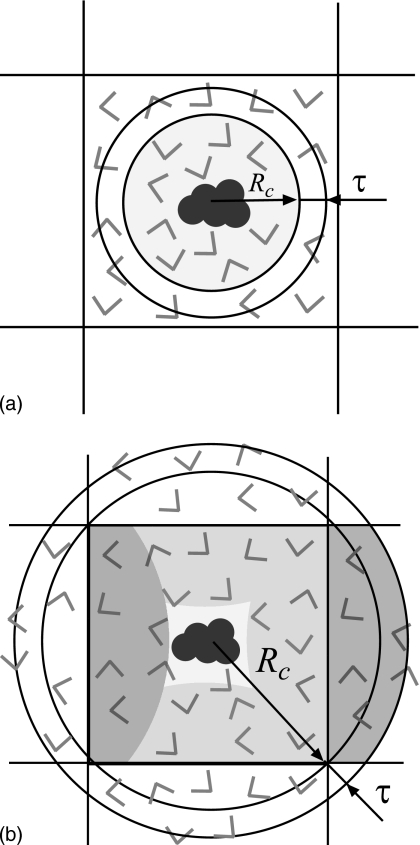Figure 3.
Cartoon explaining how the spherical cavity can be integrated with the cubic simulation box under PBCs. In (a), the radius of the sphere is smaller than half the length of the simulation box. Charges within radius Rc experience reaction field computed by the method of image charges. Electrostatic interactions for all other particles in the simulation box are computed by a different method, for instance straight cutoff. The result is a coexistence of two different regions of water in one simulation box. Due to different pressures in these regions, neither will resemble bulk water. In (b), the radius Rc is increased to enclose the entire simulation box. The advantage is that all particles are treated by the same electrostatics method. Shaded areas highlight particles within Rc+τ radius that are not unique but result from periodic imaging from the central simulation box. In both schemes, a solute placed at the center of the sphere avoids electrostatic interactions with its periodic images.

